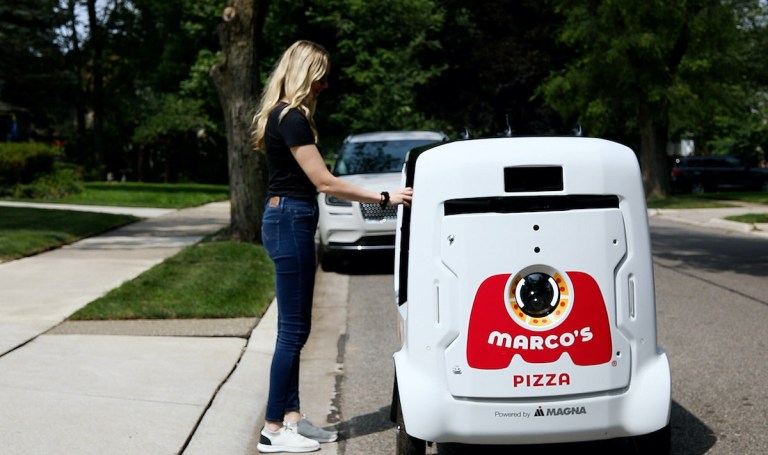
As restaurants look for ways to improve the economics of on-demand delivery, Marco’s Pizza is gearing up to test automated solutions, though it may be some time before the economics of the technology make it viable on a wider scale.
The pizza chain, which has close to 1,200 locations, announced Thursday (Sept. 28) that it is working with automotive parts and technologies supplier Magna to try out a range of last-mile solutions, including autonomous vehicles, with proof-of-concept discussions and in-market pilot tests.
In an interview with PYMNTS, Rick Stanbridge, executive vice president and chief information officer for the pizza brand, said delivery robotics will become widespread once the technology becomes more cost effective.
“I think autonomous vehicles are certainly going to be in our future. It’s relevant technology today. However, it might still be a little expensive. I think delivery will take on a lot of different aspects [in the next few years] — not just a delivery driver in a car. Robotics is going to be key to the future delivery, certainly in our large metropolitan areas. We’ll see that sooner than later. But we’re just in the concept stage right now.”
In fact, urban areas are the best markets for online ordering. PYMNTS Intelligence from the study “ConnectedEconomy™ Monthly Report: The Urban-Rural Health Divide Edition,” which drew from a survey of nearly 2,500 U.S. consumers, revealed that 75% of urban consumers engage with restaurants digitally, well above the 46% of suburban residents and 28% of those in rural areas who do the same.
That said, robotic delivery technology is still relatively new. Stanbridge outlined the concerns the company is keeping an eye on going into these tests.
“A big concern always is: how is our product handled? Is it delivered properly? Is it hot when it gets to the consumer’s location? Does the consumer accept this form of delivery? … Is it priced accordingly?” Stanbridge said.
In terms of consumer acceptance, certainly some hesitation remains. PYMNTS Intelligence for the report “Connected Dining: The Robot Will Take Your Order Now,” which is based on a survey of a census-balanced panel of nearly 2,000 U.S. consumers, reveals that, for the most part, consumers are not on board with delivery robots.
Specifically, 71% of those surveyed reported being uninterested in robotics or automated systems delivering food. Sixty-five percent of are these uninterested consumers reported having concerns about reliability and order accuracy.
Overall, the PYMNTS Intelligence study “Connected Dining: Rising Costs Push Consumers Toward Pickup” reveals that about 1 in 10 restaurant orders are placed for delivery, with Gen Z and millennials the most likely of all generations to order their food brought to their home.
While Stanbridge believes that robotic delivery technology is poised for significant growth, this initiative will offer more insight into how viable it currently is, from an economic standpoint.
“We have to be able to supply these new devices to our franchisees at a reasonable cost so that, when that cost is passed on to the consumer, it’s affordable,” Stanbridge said. “So, our intention through this process is to make sure that we don’t increase any costs to the consumer … and to make sure that this technology is in fact relevant moving forward.”